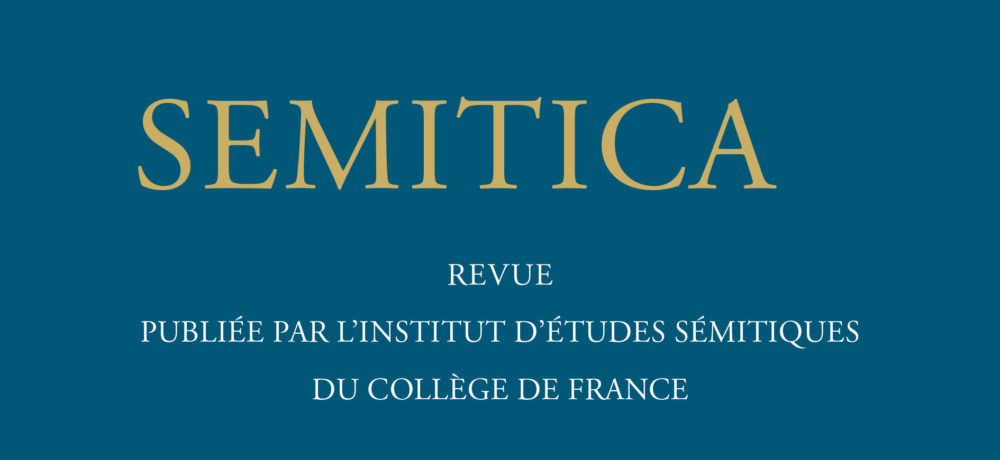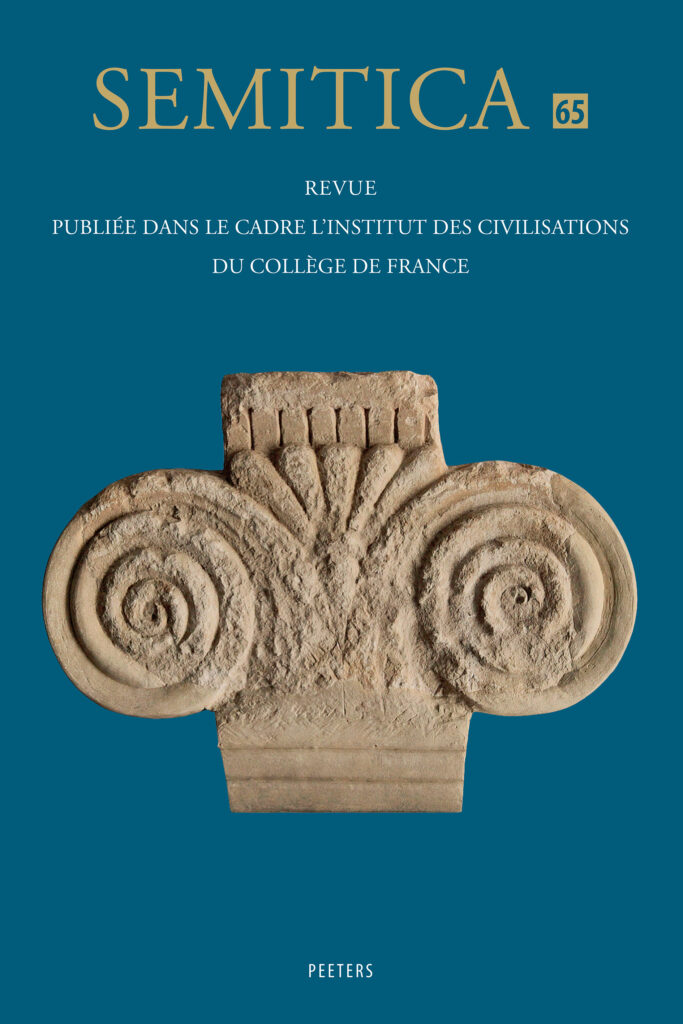Bienvenue sur Semitica.fr !
Si vous souhaitez vous procurer Semitica, en version électronique ou papier, rendez-vous sur le site Internet de notre éditeur, Peeters.
Les cahiers Semitica furent créés en 1948 par l’Institut d’études sémitiques de l’université de Paris, avec un comité composé de R. Blachère, A. Dupont-Sommer, Ch. F. Jean, J. Nougayrol, et Ch. Virolleaud, son président. En 1973, l’Institut fut transféré au Collège de France, qui assure désormais la publication de ces cahiers.
De même que l’Institut d’études sémitiques, Semitica s’étend à toutes les branches des études sémitiques : linguistique, philologie, histoire, archéologie, épigraphie, ainsi qu’à tous les domaines du monde sémitique, ancien et moderne, et aux domaines connexes.
Je vous invite à découvrir sans plus tarder les volumes déjà publiés. Vous trouverez également une liste des membres du comité de rédaction. Si vous souhaitez proposer une contribution, veuillez observer quelques consignes de rédaction. Dans tous les cas, n’hésitez pas à nous contacter !
Michael Langlois,
Éditeur scientifique.

